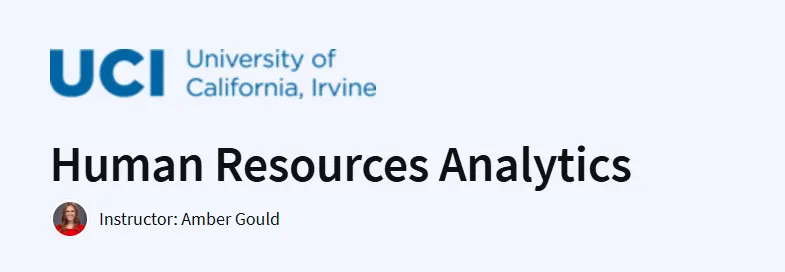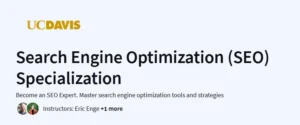What you will learn in Human Resources Analytics Course
HR Metrics Life Cycle: Understand the Human Resources Metric Life Cycle, including the employee life cycle and various types of metrics used to drive business outcomes.
Staffing, Training, and Compensation Metrics: Explore key metrics related to staffing, training, and rewards, and their roles in recruiting, hiring, and retaining quality employees.
Employee Relations Metrics: Learn about metrics that assess employee relations and how they contribute to organizational success.
Data-Driven Decision-Making: Develop the ability to use data effectively to achieve strategic HR goals and improve organizational performance.
Program Overview
HR Metrics Life Cycle
⏱️ 1 weeks
Explore the Human Resources Metric Life Cycle, analyzing the employee life cycle, HR agility, and various types of metrics used to measure and drive business outcomes.
Staffing, Training, and Compensation
⏱️ 1 weeks
Dive into staffing, training, and rewards metrics, examining HR functions and their roles in recruiting, hiring, and retaining quality hires.
Employee Relations and Overall HR Organization
⏱️ 1 weeks
- Investigate employee relations metrics and the HR organization as a whole, identifying strategies to track measures and report outcomes.
Applying HR Analytics
⏱️ 1 weeks
- Apply the knowledge gained to real-world scenarios, developing skills to implement HR analytics in organizational strategies.
Get certificate
Job Outlook
- Proficiency in HR analytics is increasingly sought after as organizations recognize the value of data-driven decision-making in human resources.
- HR professionals with analytical skills can contribute to strategic planning, improve employee performance, and enhance organizational effectiveness.
- Roles such as HR Analyst, People Analytics Specialist, and HR Data Analyst are in demand across various industries.
Specification: Human Resources Analytics
|
FAQs
- HR Metrics Life Cycle: Understand the Human Resources Metric Life Cycle, including the employee life cycle and various types of metrics used to drive business outcomes.
- Staffing, Training, and Compensation Metrics: Explore key metrics related to staffing, training, and rewards, and their roles in recruiting, hiring, and retaining quality employees.
- Employee Relations Metrics: Learn about metrics that assess employee relations and how they contribute to organizational success.
- Data-Driven Decision-Making: Develop the ability to use data effectively to achieve strategic HR goals and improve organizational performance.
- Duration: The course is designed to be completed in approximately 4 weeks.
- Pacing: It is self-paced, allowing learners to start and finish at their convenience.
- Access: Learners have lifetime access to course materials upon enrollment.
- HR Metrics Development: Ability to develop and implement HR metrics throughout the employee life cycle.
- Data Analysis: Skills in analyzing HR data to inform decision-making.
- Strategic Planning: Capability to align HR metrics with organizational goals.
- Reporting: Proficiency in presenting HR data and insights to stakeholders.
- Prerequisites: The course is designed for beginners, with no prior experience in HR analytics required.
- Recommended Background: Basic understanding of HR principles and data analysis concepts may be beneficial.
- Career Advancement: Equips you with data-driven decision-making skills sought after in HR roles.
- Job Opportunities: Prepares you for positions such as HR Analyst, People Analytics Specialist, and HR Data Analyst.
- Organizational Impact: Enables you to contribute to strategic planning and improve organizational effectiveness through analytics.





